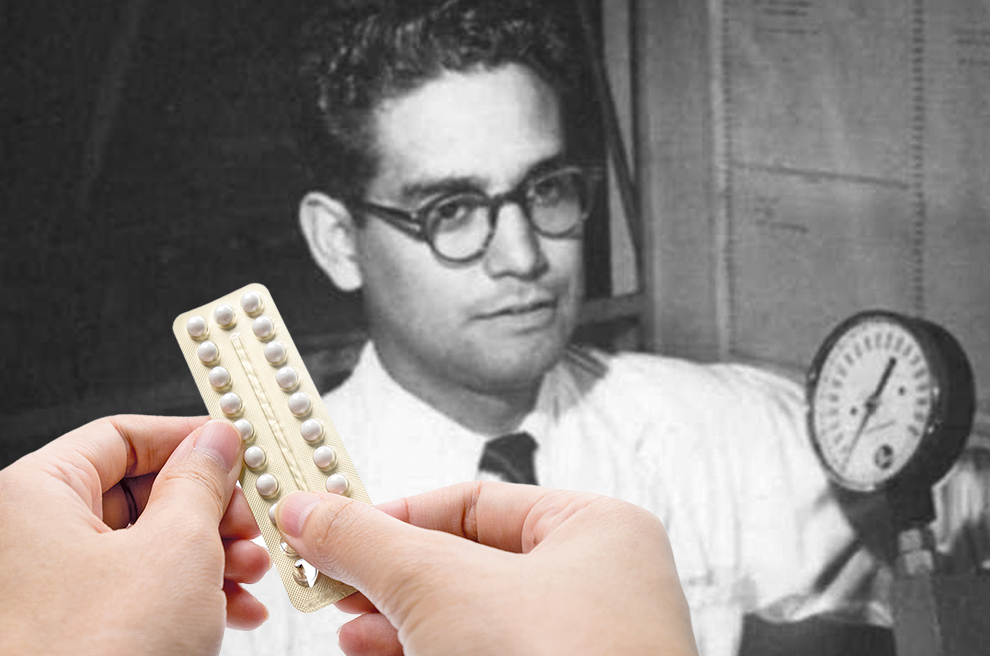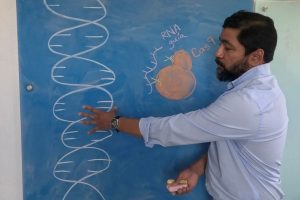The female contraceptive pill was created after his discovery
Luis Ernesto Miramontes, creator of the compound that revolutionized the world
The chemical engineer from UNAM created a milestone for feminism: “It gave us the possibility of exercising sexuality without the risk of getting pregnant and allowed us to separate sex from procreation”: Marta Lamas
By Ilse Valencia
When Luis Ernesto Miramontes Cárdenas was still a teenager, a book fell into his hands that would be a call to vocation: Microbe Hunters, by Paul de Kruif, a text whose pages tell the story of those scientists who, by creating the first vaccines, not only saved millions of lives, but also transformed the world.
“What was narrated in that work motivated my father to move from his native Tepic, Nayarit to Mexico City. He wanted to study something that mixed biology and pharmaceuticals and that, in addition, was beneficial for people. With this objective, he enrolled in the Chemical Engineering program at the National University,” shares his son Octavio Miramontes Vidal, who is now a researcher at the UNAM Physics Institute.
Those who knew Luis Ernesto Miramontes describe him as a person committed to scientific topics or activities with a positive impact on the community, as someone always willing to make sacrifices if this meant progress for humans, and as a man whose conduct and temperance bordered on the stoic.
Such characteristics led him to achieve, at just 26 years of age, one of the most important discoveries in modern medicine: the synthesis of the base compound of the first synthetic female oral contraceptive, a contribution that would bring about a revolution that goes beyond the social.

A revolutionary contribution
Luis Miramontes was born in Nayarit in 1925, a few years after the end of the Revolution. He grew up in a family with limited resources, at a time when there were few opportunities to study. It was thanks to his aunt, who was a rural teacher, that he had his first approaches to mathematics, reading and knowledge that made him dream of a world out there to discover.
Motivated by everything he was learning and by what he read in Microbe Hunters, young Luis Ernesto packed his bags and left the family home with a very clear plan: to move to Mexico City to finish high school and, later, get a degree. “He sought to pursue a university career in the best place in Mexico, the UNAM.”
Thus, in the 1940s, he began taking classes at the National Preparatory School – when it was still located in the Old College of San Ildefonso – and, upon graduation, he enrolled in Chemical Engineering, without imagining that shortly after (even before obtaining his degree) his work would impose new paradigms. “At that time, the Syntex company, created by foreigners, had partnered with the UNAM Chemistry Institute so that some of its most talented students could go to its laboratories and support or do research. My father joined the steroid synthesis project as an assistant, particularly for products related to sexual activity hormones,” explains his son Octavio.
The company was very interested in barbasco, a tuber endemic to Veracruz and Oaxaca that is a natural source of hormones. Miramontes’s task –whom his teachers described as “a good experimenter who could complete complex syntheses in record time”– was to obtain molecules from this plant in order to reinforce the embryo in the womb and prevent spontaneous abortions, but in 1951 he would end up synthesizing a steroid substance called norethisterone, which was found to have contraceptive properties.
This would surprise everyone, even the then 26-year-old, who in an interview for the book Laboratorios en la selva confessed: “I knew it would have oral activity, but I didn’t imagine that everything related to the pill would happen because of these experiments.”
Miramontes Cárdenas’ work made it possible for the first synthetic contraceptive pill to go on sale in the United States in October 1961. “The social impact of this had global reach. “Women now had greater control over their sexuality and could plan how many children they wanted,” says Octavio.
For Marta Lamas, from the Center for Gender Research and Studies at UNAM, this is a highly relevant scientific advance. “The first contraceptive pill was wonderful. It gave us the possibility of exercising sexuality without the risk of getting pregnant, of deciding, and it allowed us to separate sex from procreation.”
And not only that, adds the researcher, because the work of this UNAM student who left the laboratory to write his thesis, influenced the sexual revolution of the 60s, birth control, and reinforced the fight of women for their reproductive rights. “This fit like a glove. Young people at the time had many questions about their sexuality and suddenly a pill appeared that allowed them to live a liberation movement.”
Six decades later, the relevance of this achievement does not fade. In fact, it is estimated that currently around 150 million women use the contraceptive pill as a family planning method (according to the United Nations World Family Planning 2022), while for the Mexican Academy of Sciences it is the most important Mexican contribution of the 20th century to science.

Work for society
Luis Miramontes, father of 10 children, is remembered for being someone always dedicated to his family and work. “He was a very serious person in his activities and committed to all the institutions in which he worked. He had a huge affection for UNAM,” Octavio recalls.
He was also a prolific inventor: he obtained 64 patents, which could be more, since between 1950 and 1970 Mexican patent records were not easily accessible. In addition, he left his mark on pharmaceutical, agricultural and atmospheric chemistry.
He also advised the National Council of Science and Technology in its early years, collaborated on commissions to analyze problems such as water shortages, and became involved with state-owned companies that produce fertilizers and salt. His concern for environmental pollution led him to work on catalytic converters for cars, and as deputy director of the Mexican Petroleum Institute, he did petrochemical research.
His life was marked by pride and love for the National University, where he was one of the first full-time researchers hired at the newly opened Ciudad Universitaria. He also taught classes at the Faculty of Chemistry for decades.
“At UNAM, top-level activities are carried out that translate into beneficial actions for the country. An example of this is the legacy of Luis Miramontes, the synthesis of the first oral contraceptive, which brought about a revolution in social structures,” Octavio concludes. And it all began with a book. In the mid-twentieth century, the United States Patent Office selected the oral contraceptive as one of its 40 most important patents and placed the surname Miramontes Cárdenas on its list alongside that of the most famous of the “microbe hunters,” Louis Pasteur himself. If young Luis Ernesto ever longed to be among those scientists he admired so much and whom he learned about through Paul de Kruif’s text, today we can say that there is no doubt: his dream has come true.











